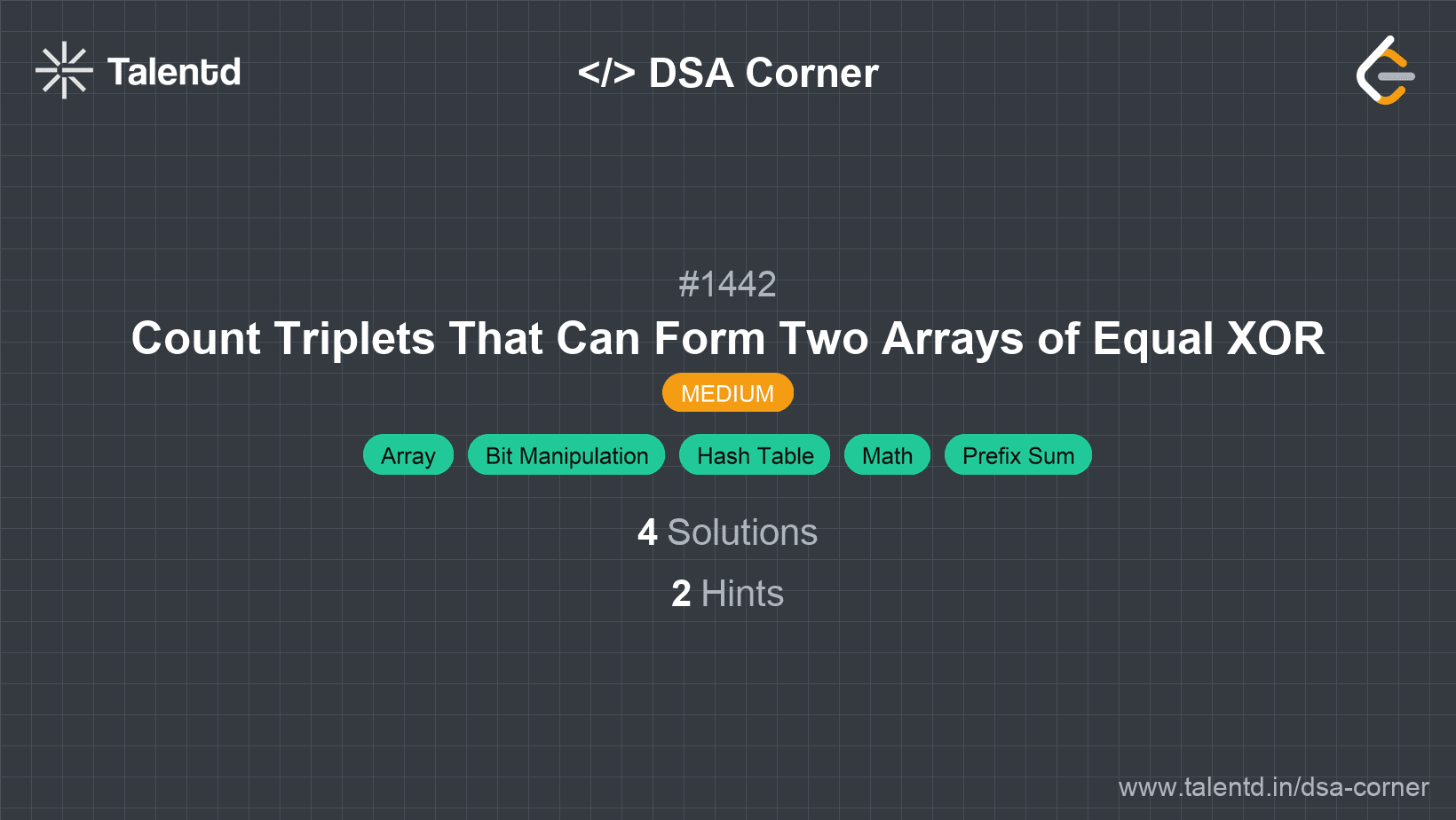
Sponsored
Sponsored
To find the number of triplets, we can utilize prefix XOR which makes checking if two subarrays have equal XOR efficient. For any indices i, j, k in the array, if the XOR from i to j-1 equals the XOR from j to k, we have a valid triplet. Using prefix XOR allows us to calculate this in constant time.
We compute the prefix XOR of the array where prefix[i] is the XOR from the start of the array to index i. For each pair of indices (i, k), if (prefix[i-1] == prefix[k]), then for all j where i <= j <= k, (i, j, k) will form a valid triplet.
Time Complexity: O(n^2), where n is the length of the array, as we are using two nested loops.
Space Complexity: O(n), due to the storage of the prefix array.
1function countTriplets(arr) {
2 let n = arr.length;
3 let prefix = Array(n + 1).fill(0);
4 for (let i = 0; i < n; i++) {
5 prefix[i + 1] = prefix[i] ^ arr[i];
6 }
7 let count = 0;
8 for (let i = 0; i < n; i++) {
9 for (let k = i + 1; k < n; k++) {
10 if (prefix[i] === prefix[k + 1]) {
11 count += k - i;
12 }
13 }
14 }
15 return count;
16}The JavaScript solution follows the same logic as the Python solution. Prefix XOR is calculated and used to determine valid triplet indices in a similar manner.
This approach optimizes the first one by reducing redundant checks and efficiently calculating the number of valid triplet indices.
As we calculate the prefix XOR, we maintain a hashmap (or dictionary) which helps in counting valid j values directly, reducing the nested loop complexity by using suffix array observations.
Time Complexity: O(n), where n is the array length due to the optimization using hashmaps that distill the double loop.
Space Complexity: O(n), primarily due to hashmap storage.
1public int countTriplets(int[] arr)In the Java solution, we use hashmaps to store the frequency and counts of the prefix XORs. This allows us to calculate the number of valid j indices without needing to iterate exhaustively, leveraging hash lookups instead.